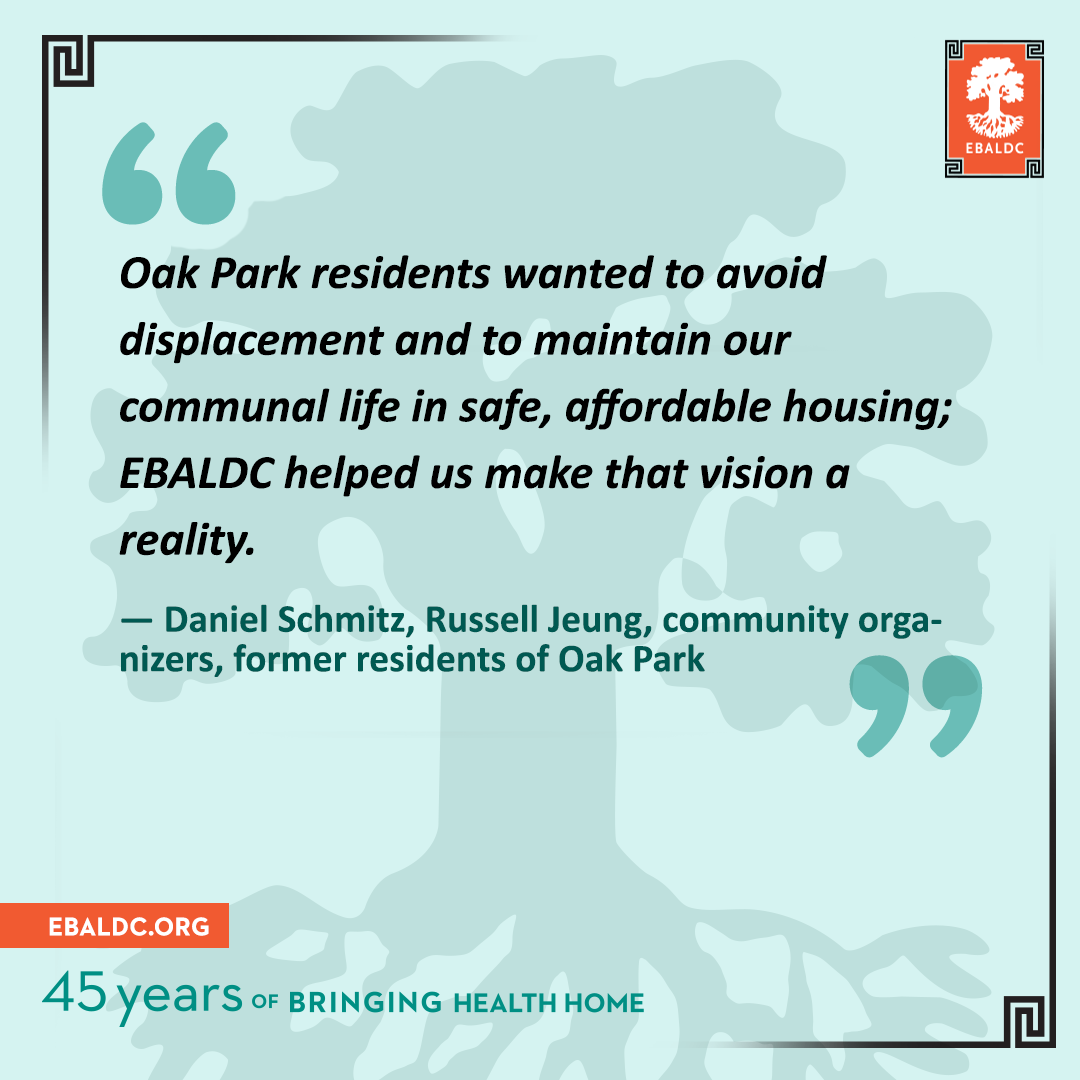Preserving Oak Park’s Rich Cultural Legacy in Oakland

45 Stories for 45 Years
Contributors: Daniel Schmitz, Russell Jeung, community organizers, former residents of Oak Park
In the 1990s, Oak Park Apartments, a 52 unit building in the San Antonio neighborhood in Oakland, was a complex that many regarded as a slum, but we saw as a vibrant, close-knit ethnic village and home. On the one hand, we had poor building management and an egregious number of building code violations which lead to unsafe conditions for residents. The neighborhood had high rates of community violence and blight. On the other hand, Oak Park residents maintained their own, rich culture and interconnected community life.
The families that lived there did not want to lose the positive aspects of the beautiful community they had built. The wider AAPI community in Oakland referred to Oak Park as Cambodian Village, as every Cambodian in Oakland seemed to have a relative there. People sold traditional noodles out of their apartments, 400 people would gather in the courtyard for Cambodian New Year, and a native healer maintained his traditional practice with an ornate shrine in his living room. And the families there were not only Cambodian but also Latinx and African American.
A group of us living at Oak Park with experience in community organizing, and who shared a deep Christian faith, mobilized more than 200 residents at the building to sue the landlord given the conditions at Oak Park. Following a long and drawn out process that included the building being condemned, the landlord named as one of the “dirty dozen” worst slumlords in the city, and the corporate ownerships declaring bankruptcy, our group formed an unusual alliance with the City of Oakland and Fannie Mae who held the building’s mortgage. Together, we persuaded Oak Park’s landlord to settle our suit by selling the building to EBALDC.
Members of our coalition had long been familiar with EBALDC and the impacts they had already made in the community. EBALDC had even already tried to purchase the building in the past to preserve its place in the community.
Oak Park residents wanted to avoid displacement and to maintain our communal life in safe, affordable housing; EBALDC helped us make that vision a reality. They brought the building up to code while minimizing resident displacement through the renovation process. They also incorporated tenants’ suggestions for design like bike racks and a community garden. They worked with New Hope Covenant Church and other partners to provide wrap around services for tenants including tutoring, ESL and citizenship classes as well as community space for activism. EBALDC worked hard to create a space that worked with tenants to address the needs of the community and develop a space where the community could thrive.
As EBALDC marks our 45th anniversary, we will be gathering more stories like this one from our friends, family, community members, partners and more stakeholders that have made our impact possible. We would be honored for you to join us:
- To contribute your own story, visit: bit.ly/EBALDC45Stories
- Follow us on social media: @EBALDC
- Visit us online to read the stories: ebaldc.org/category/45-stories
